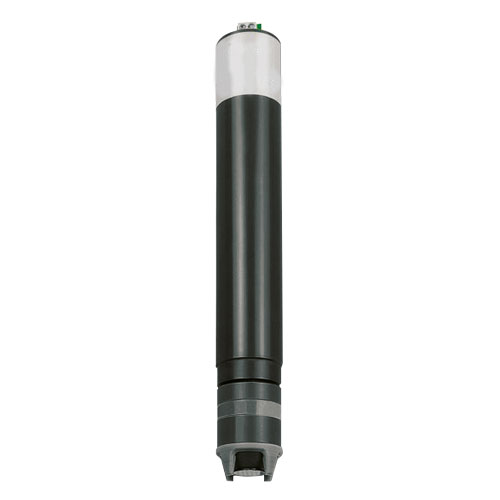EAM-SRC series residual chlorine analyzer probe
Chlorine is also widely used directly or indirectly in the production of many products, such as papermaking, sterilization, dyes, food, insecticides, pigments, petroleum products, plastics, pharmaceuticals, textiles, solvents, and many other consumer goods. It is also used for sterilization and treatment of other microorganisms in the drinking water supply industry. In addition, it can also be used for bleaching wooden pulp in the papermaking industry. Bleach is also used to remove ink from recycled paper products.
Residual chlorine, chlorine dioxide, or total chlorine (including chloramines) are often measured for monitoring the disinfection of drinking water, recycled water, or pool water. When chlorine is added to water, it reacts with organic compounds and metals in the water to form composite chlorine. Because composite chlorine cannot be used for disinfection, this effect is called the chlorine demand of water.
Residual chlorine refers to chlorine present in the form of hypochlorous acid or hypochlorite ions. When the chlorine demand for water is met, the remaining chlorine can be used to oxidize pollutants. Residual chlorine measurement is one of the most important measurement parameters in the water treatment industry today. Monitoring residual chlorine can ensure that there is sufficient chlorine in the water for disinfection, or that chlorine can be effectively removed in some situations. For applications where residual chlorine concentration is extremely important for disinfection, the most reasonable measurement method is to use an electric current residual chlorine probe.
Chlorine dioxide is a neutral chlorine compound. It is completely different from the element chlorine, not only in terms of chemical structure, but also in terms of chemical properties. One of the most important characteristics of chlorine dioxide is its high water solubility, especially in cold water. When it enters water, chlorine dioxide cannot hydrolyze and remains a soluble gas in solution. The solubility of chlorine dioxide in water is 10 times higher than that of chlorine. It is not affected by pH and has excellent residual effects, which can maintain activity for hours or days. It does not react with ammonia or amines. Still effective at low temperatures.
Chlorine dioxide is one of the most effective disinfection methods in the water industry today. Chlorine dioxide can not only be used for disinfection, but also for other fields. Low dosage does not achieve the desired effect, while high dosage forms chlorite. In addition, chlorine dioxide is particularly suitable for killing Legionella bacteria.
Main features | SRC-FCL | SRC-FCLH | SRC-DCL | SRC-DCLH | SRC-TCL |
Measuring range | 0~0.5/2/5/10/200ppm | 0~1/5/10ppm | 0~2/10ppm | 0~1ppm | 0~2/5/10ppm |
Measuring method | Electric current method | Electric current method | Electric current method | Electric current method | Electric current method |
PH range | 6~8 | 1~9 | 1~11 | 1~9 | 4~12 |
Operating temperature | 0~45℃ | 0~70℃ | 0~45℃ | 0~70℃ | 0~45℃ |
Pressure Range | 0~3 bar | 0~8 bar | 0~1 bar | 0~8 bar | 0~0.5 bar |
Flow range | 30L/H | 80L/H | 30L/H | 80L/H | 30L/H |
Body material | PVC-U,PEEK,SS1.4571 | PVC-U,PEEK | PVC-U | PVC-U,PEEK | PVC-U,PEEK, SS1.4571 |
Electrode material | Gold containing silver chloride | Gold | Gold | Gold | Gold containing silver chloride |
Diaphragm | PTFE | PTFE | PTFE | PTFE | PTFE |
Connection method | 2-pole terminal | 2-pole terminal | 2-pole terminal | 2-pole terminal | 2-pole terminal |
Compensation method | Temperature compensation | Temperature compensation | Temperature compensation | Temperature compensation | Temperature compensation |
Power Supply | 12~24VDC | 12~24VDC | 12~24VDC | 12~24VDC | 12~24VDC |
Output signal | 4~20mA | 4~20mA | 4~20mA | 4~20mA | 4~20mA |




